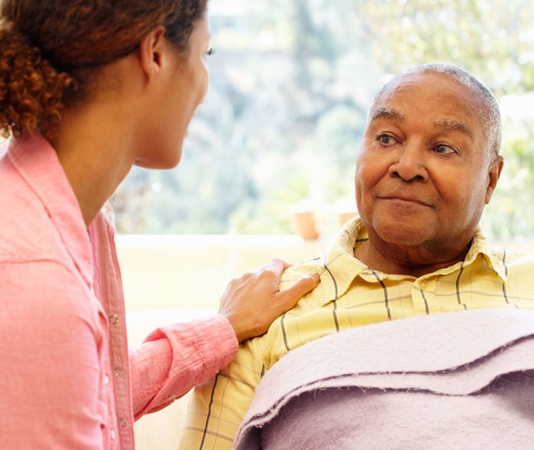Not everyone who is living with diabetes needs a caregiver as they are able to manage their self-care routines independently. However, depending on the type of diabetes and the overall well-being of the individual, there can be a need for care.
Types of Diabetes
There are 1.5 million Americans diagnosed with diabetes annually, according to the American Diabetes Association. In addition, the prevalence of people who are 65 years of age and older with diabetes (both diagnosed and undiagnosed) is 26.8%, they state. There are millions of Americans who are living with prediabetes as well.
Type 1 diabetes, which used to be called juvenile diabetes, is typically diagnosed in children and young adults. In type 1 diabetes, the pancreas produces little to no insulin, and insulin is needed to break down sugars into energy for the body. According to the American Diabetes Association, only 5% of the 25.8 million people with diabetes have type 1.
Experts agree that with careful food monitoring, medication, insulin pumps, glucose control, and education about the common disease, that people can live long, full lives. While this is manageable, one person’s diabetes can impact a whole family.
“It puts the caregivers in a difficult position,” said Linda Haas, an endocrinology nurse specialist and clinical nurse advisor at the U.S. Department of Veteran Affairs. “They shouldn’t have to be the diabetes police.”
Type 2 diabetes is the most common form of diabetes and it means that the body does not use insulin properly. Some people are able to make dietary and lifestyle changes with more exercise to control their blood sugar levels, and others will need medication or insulin.
According to the Mayo Clinic, these are the symptoms of Type 2 diabetes:
Increased thirst and hunger
Fatigue
Blurred vision
Frequent urination
Numbness or tingling in hands or feet
Slow-healing sores
Frequent infections
If you or a loved one experiences these symptoms, contact your health care provider. Also, review these tips for caring for someone who is living with diabetes.
Diabetes Risks
If someone is not on top of monitoring their diabetes care, they can put themselves and others at risk. For example, a person whose blood sugar crashes while driving can crash their car or if not driving simply fall down.
How involved a caregiver is in maintaining well-being will depend on the age of the person who has been diagnosed and the relationship with between both parties. Some scenarios:
- The parent of a school-age child will need to communicate with the school about what the care plan is and what medicines can be kept at the school, as well as what the student is capable of doing.
- The spouse of someone who has diabetes will need to communicate with their spouse and health care provider. There might be other relationship dynamics so the spouse does not end up parenting with reminders on everything from insulin pump batteries to food choices and regular glucose monitoring.
- Adult children of an elder parent who is diagnosed with diabetes can look into hiring a professional caregiver to assist with medication reminders, taking daily walks, and meal preparation, if they are not available to do these tasks or not nearby to check in.
All caregivers can seek out support from virtual or in-person groups or communities to share their experiences and learn more about coping. As with any illness, symptoms may change over time so education with the appropriate professionals is critical to prepare for possible diabetes-related illnesses such as heart disease, kidney disease, strokes, non-traumatic limb amputation, and more.
Families who have experience in caring for someone who is living with diabetes recommend education and support not only to monitor the progression of diabetes but to keep personal relationships healthy too.




.1803151925550.jpg)
